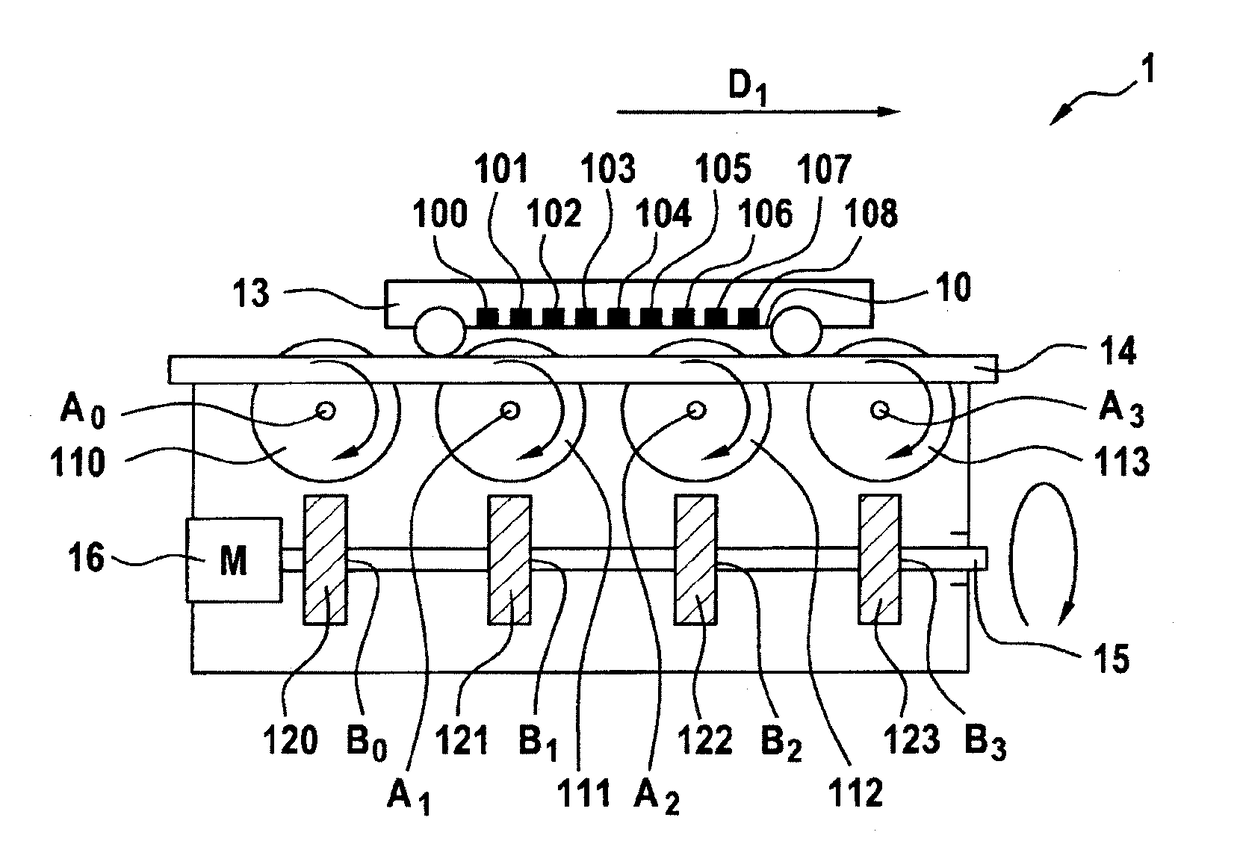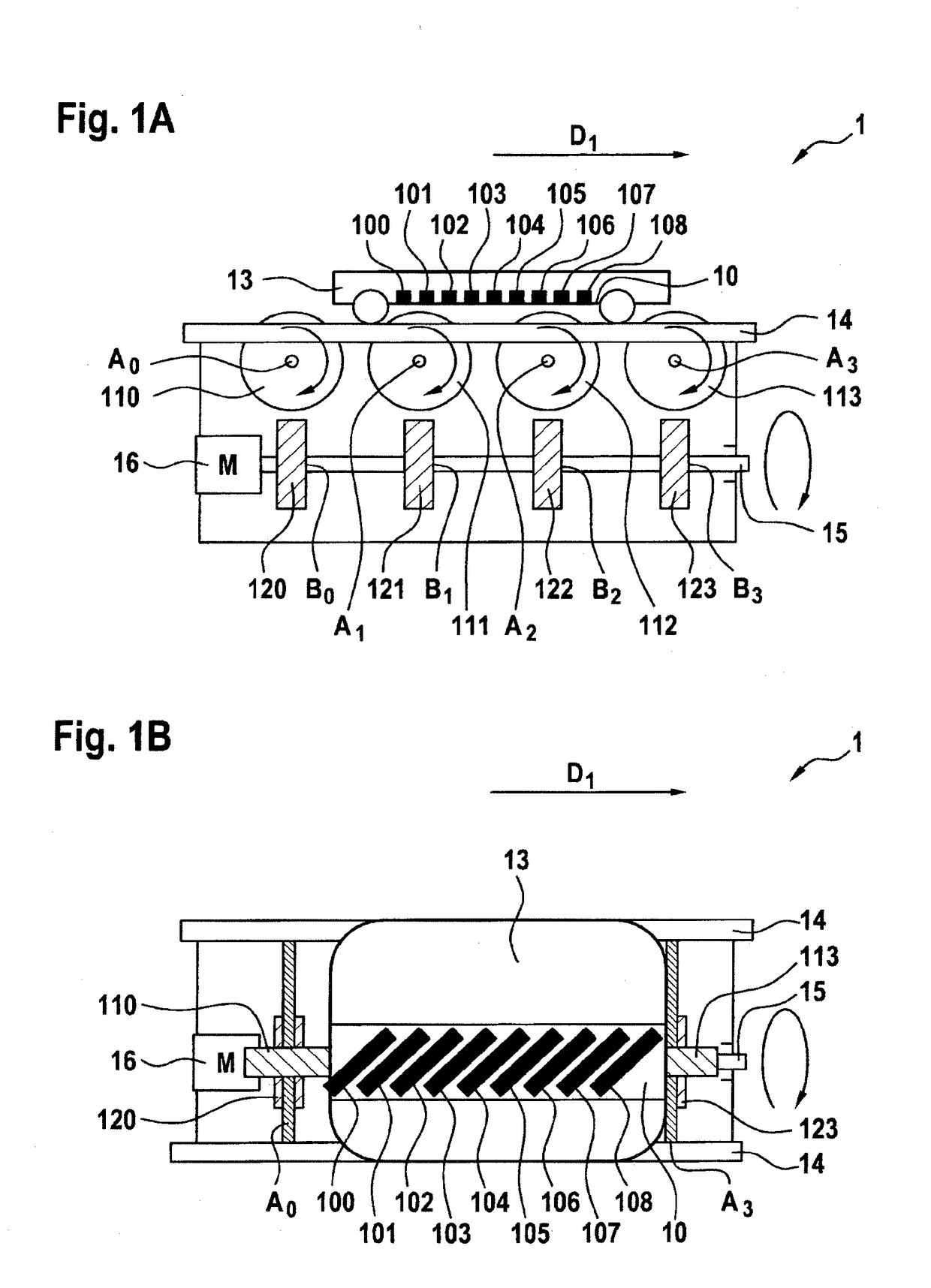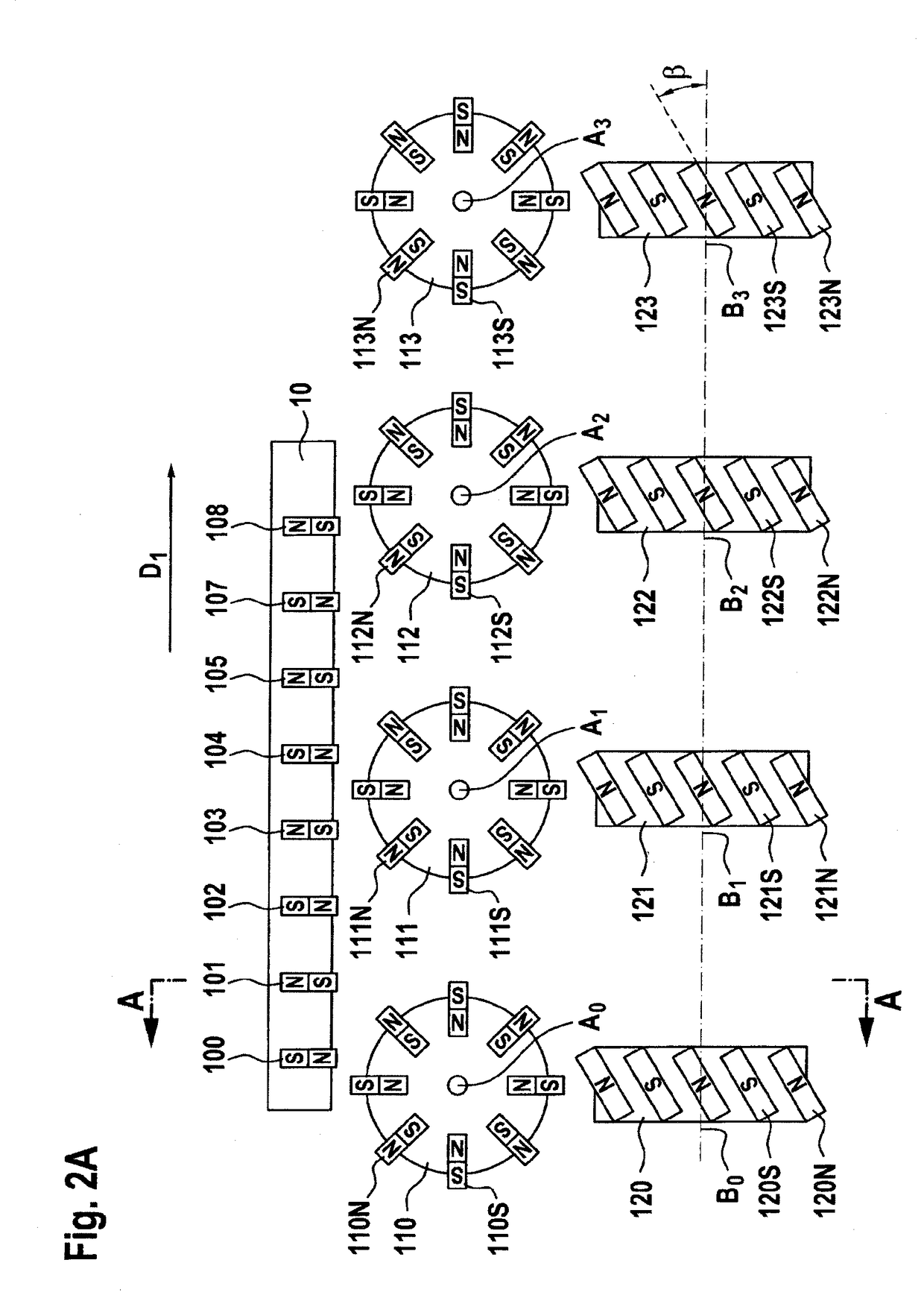Conveying apparatus and transmitting system
a transmission system and conveying apparatus technology, applied in the direction of conveyors, rollers, dynamo-electric machines, etc., can solve the problems of unstable movement along the first direction, and achieve the effects of reducing the above force component, increasing the stability of movement along the first direction, and reducing the number of magnetic gears
- Summary
- Abstract
- Description
- Claims
- Application Information
AI Technical Summary
Benefits of technology
Problems solved by technology
Method used
Image
Examples
Embodiment Construction
[0021]FIGS. 1A and 1B illustrate a main view and a top view of a conveying apparatus according to one embodiment of the present invention. As illustrated in FIGS. 1A and 1B, the conveying apparatus 1 includes: a magnetic rack 10, at least one first magnetic gear 110-113, and at least one second magnetic gear 120-123. The magnetic rack 10 may move along a first direction D1. For example, the magnetic rack 10 may be fixed on the substrate 13 and the substrate 13 is rolling connected to a guide rail 14 arranged in the first direction D1, such that the magnetic rack 10 may move on the guide rail 14 with the substrate 13 along the first direction D1. A to-be-conveyed material is placed on the substrate 13. With the rolling connection, particles generated by contact with the guide rail 14 can be reduced. The magnetic rack 10 further includes a plurality of magnetic rack magnetic teeth 100-108 arranged along the first direction D1, and adjacent ones of the magnetic rack magnetic teeth have...
PUM
 Login to View More
Login to View More Abstract
Description
Claims
Application Information
 Login to View More
Login to View More - R&D
- Intellectual Property
- Life Sciences
- Materials
- Tech Scout
- Unparalleled Data Quality
- Higher Quality Content
- 60% Fewer Hallucinations
Browse by: Latest US Patents, China's latest patents, Technical Efficacy Thesaurus, Application Domain, Technology Topic, Popular Technical Reports.
© 2025 PatSnap. All rights reserved.Legal|Privacy policy|Modern Slavery Act Transparency Statement|Sitemap|About US| Contact US: help@patsnap.com



